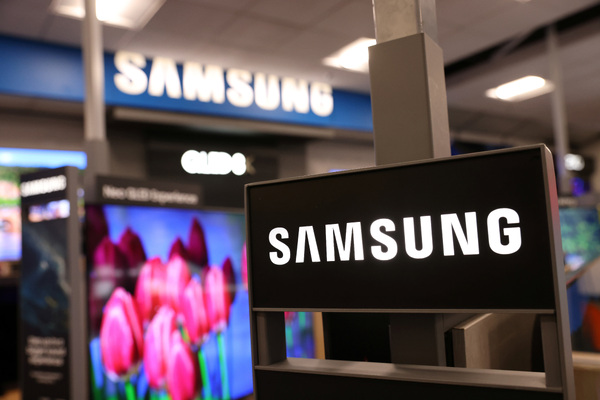The final stepping stones towards global IoT connectivity
How a new standard is set to remove the barriers from roaming in IoT devices

IoT deployments cover a staggeringly wide spectrum of use cases, so much so that using IoT as an umbrella term is itself problematic. Connected devices can range from tiny sensors to sizeable AMRs (autonomous mobile robots). Accordingly, the trade-offs made between data capacity, area coverage and energy consumption are also unique to each IoT system.
A rather dynamically growing segment of the sector is massive IoT, where hundreds or thousands of devices are distributed over a vast geographic area.
While the emerging 5G technology supports massive machine-type communications too, where it’s ultra-low latency and one-millisecond response time are leveraged, it’s rather use cases linked to low-power wide-area networks (LPWANs) that are projected to proliferate in the short term. (By 2025, the number of LPWAN connections is expected to overtake regular cellular ones.)
Low energy consumption, wide coverage, low-to-medium data rate
LPWAN is a group of wireless technologies with an improved connectivity range designed for M2M communications with low data rate deployed in hard-to-reach locations that require long battery life.
Although there are differences between the two licensed LPWAN networks – NB-IoT and LTE-M – in terms of response times and how they support moving IoT devices, they both have a sleep mode and the capability to listen less often to the network, which accommodates how smart meters, sensors in smart city or agricultural contexts or cargo-tracking and telematics operate.
As IoT connectivity was originally supplied via mobile network operators’ (MNOs’) older generations of networks designed for consumer needs, such as 2G and 3G – many of them still are – it took a couple of years before specifications for NB-IoT and LTE-M, the first secure and standard-based networks designed specifically for IoT devices, were published in 2016 and 2017.
IoT devices, similarly to mobile phones, have their identity stored in SIM (subscriber identity module) cards, which must be more durable than consumer ones, as they are often in devices that need to operate under harsh conditions for a period of approximately ten years.
These SIM cards typically have increased storage capacity compared with their consumer equivalents, and their roaming capabilities, especially in the case of massive IoT deployments on an international scale, are core features that fundamentally define an IoT device’s performance.
IoT roaming
Roaming is the ability of a SIM card to use cellular networks other than its home network. MNOs originally could provide roaming services via roaming agreements with other operators around the globe.
Initially, consumer devices could circumvent the payment of roaming fees by swapping SIM cards when switching between countries to use the network services of providers other than the ones they had a contract with. Later, to make the procedure less cumbersome, a new technology, remote SIM provisioning (RSP), was introduced.
This new architecture comprises three components. The first one is a SIM card that can be any type in terms of size (nano, micro, standard) or the level of embeddedness (eSIM or eSIM). The second is a software component, the so-called embedded universal integrated circuit card (eUICC), which can host multiple UICCs on a single SIM and therefore eliminates the need to migrate profiles between SIMS. And, finally, the third new building block is the RSP platform, which manages SIM profiles saved on eUICC capable SIM cards over the air, including their installation, switching and deactivation.
SGP.32 – the latest step in IoT’s divergence from consumer standards
But, as it happens, the new RSP technology’s first iteration has also been geared towards consumer devices, where SIM provisioning takes place with the active participation of the device’s owner.
Although remote SIM provisioning is a capability that can revolutionise global-scale mass IoT, the restricted capabilities of machine-to-machine (M2M) communication still stand in the way of taking full advantage of the new technology.
In comparison with the consumer eUICC standard, the NB-IoT standard doesn’t support SMSs or QR codes which it’d need to enable the automatic download of a new SIM profile.
To address this pain point, a long-awaited new IoT remote provisioning standard was published on 26 May, 2023 to simplify the integration of IoT devices on a mass scale, as well as to ensure seamless switching between providers. The new standard designed specifically for IoT systems achieves this by introducing a new SIM provisioning tool (eIM) and an IoT profile assistant (IPA).
Although many see the standard as bringing the promise of global roaming for IoT deployments to life, according to freeeway’s guide, the hardware that supports the new standard on the firmware isn’t likely to be widely available before early 2025.
Until then, businesses that want to get on with their IoT implementations and make sure they are future-proof can look out for pre-standard solutions that are compatible with SGP.32 and allow for a smooth transition to the new standard at a later stage.
In IoT, the terms eSIM and eUICC are often used interchangeably. To avoid confusion, the article uses eUICC all along and reserves eSIM to designate a SIM card form factor.

Zita Goldman
Most Viewed
23-29 Hendon Lane, London, N3 1RT
23-29 Hendon Lane, London, N3 1RT
020 8349 4363
© 2024, Lyonsdown Limited. Business Reporter® is a registered trademark of Lyonsdown Ltd. VAT registration number: 830519543
Join the Business Reporter community today and get access to all our newsletters, and our full library of talk show episodes
Join the Business Reporter community today and get access to all our newsletters, and our full library of talk show episodes



